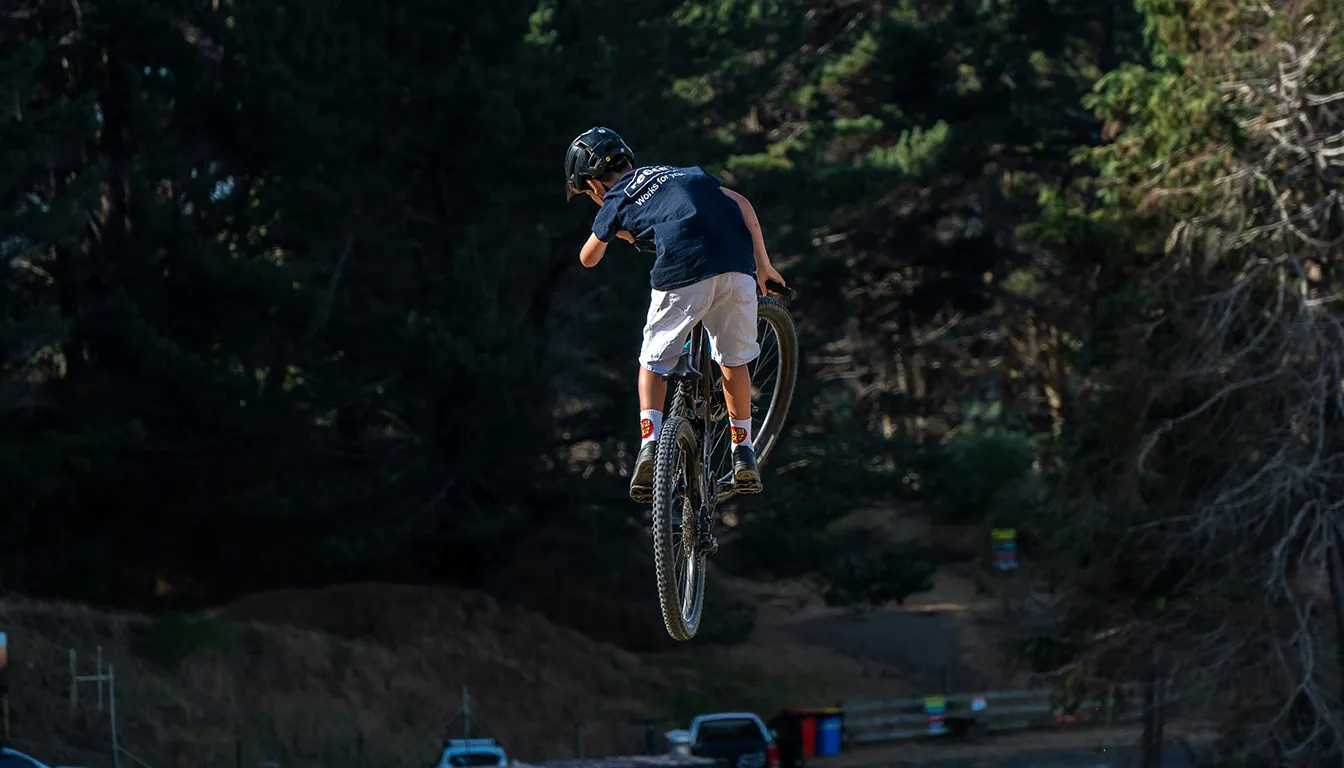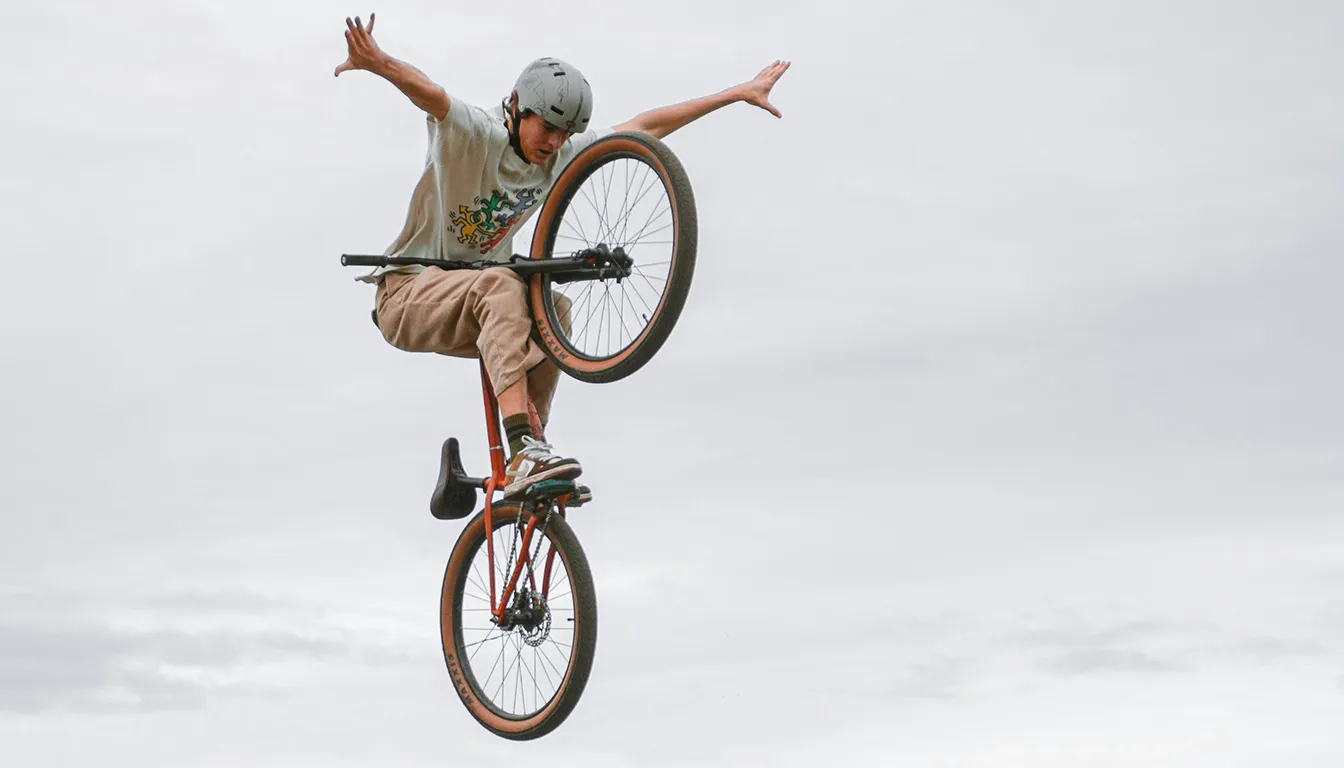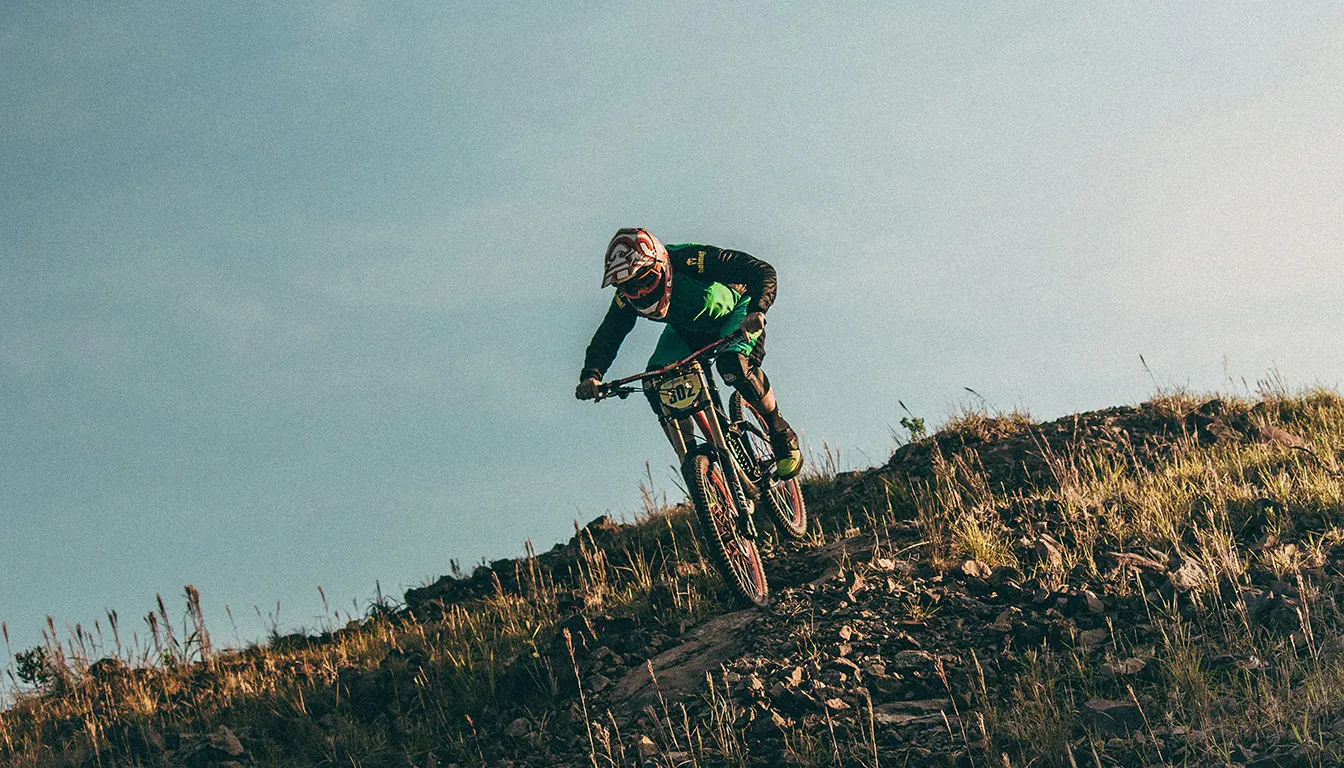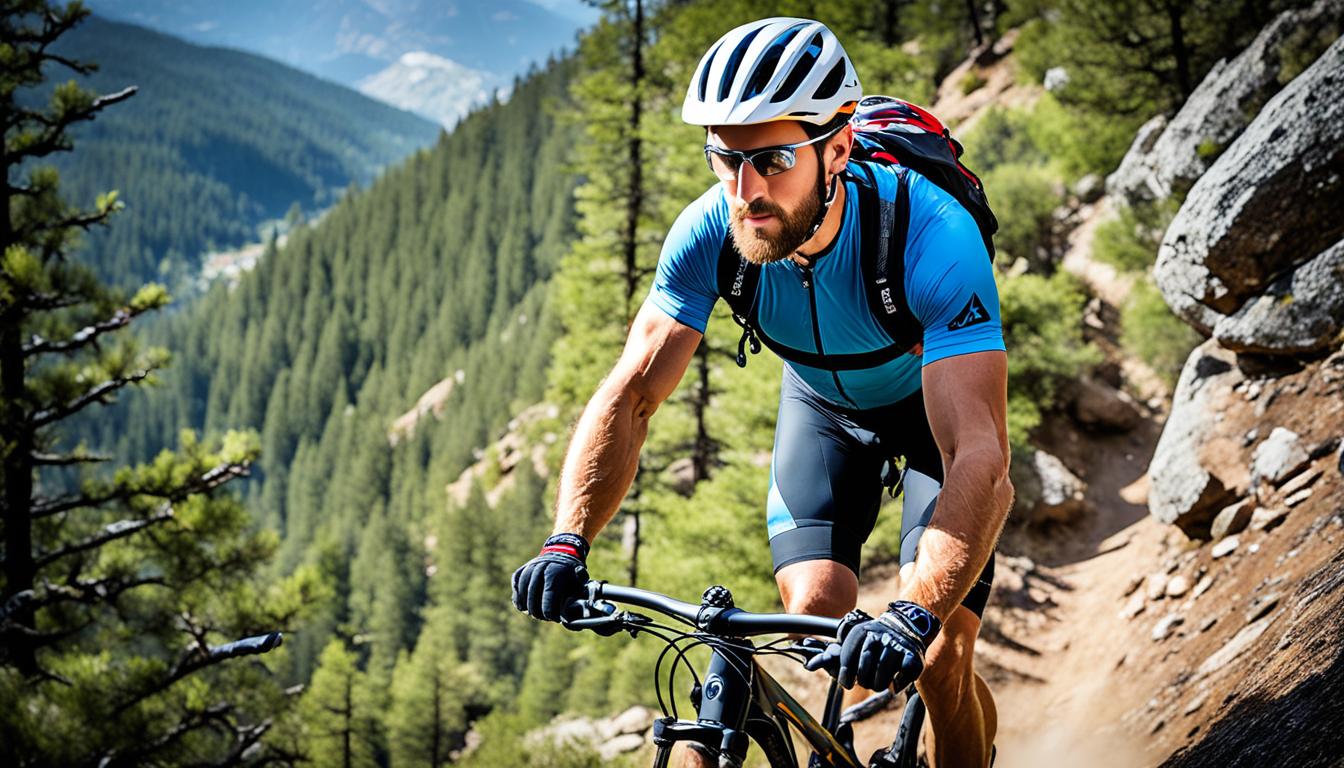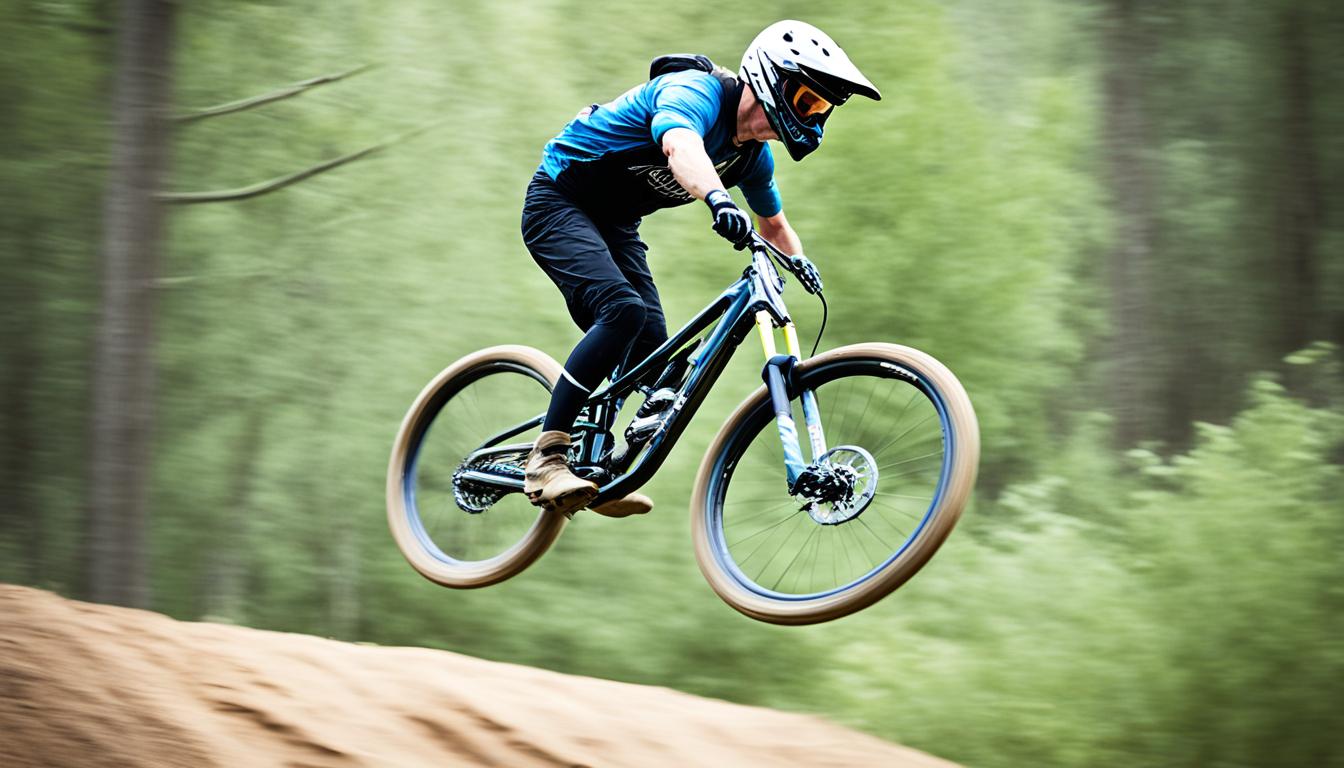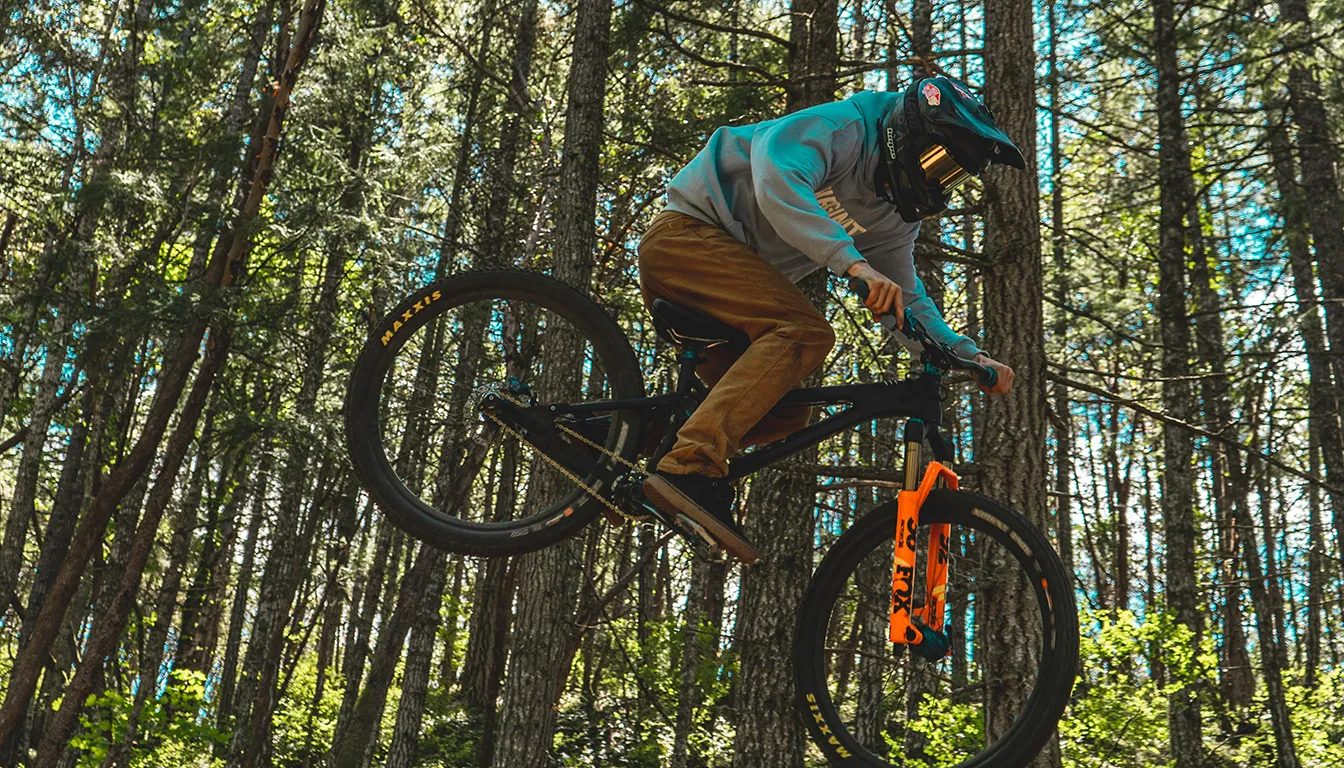Dirt jumping is an exciting sport that needs more than just passion. You must master certain techniques to improve your ride. This article explores crucial dirt jumping skills every rider should know. It covers everything from improving bike handling to choosing the right equipment. These basics help riders gain confidence, jump safely, and reduce the chance of getting hurt. With the right focus, you can enjoy every moment of this thrilling sport.
Understanding the Basics of Dirt Jumping
Dirt jumping is an exciting part of mountain biking. It mixes skill, technique, and the right gear. Riders need strong bike handling skills to do well. Understanding the dirt jump basics is key for anyone wanting to get better at this sport.
The Importance of Bike Handling Skills
Good bike handling skills are crucial for control during a jump. They make it easier to steer and feel confident in the air. If riders get these skills right, they’re less likely to crash. This means they can try harder jumps safely.
Being in control while in the air is very important. Moving smoothly helps avoid being rigid when jumping.
Key Equipment for Dirt Jumping
The correct equipment helps a rider’s performance and safety. What you need includes:
- Protective helmets
- Knee pads
- Flat pedals
- Stiff-soled shoes
Dirt jump bikes are made to be agile and quick. They have short wheelbases and small wheels. It’s good to choose jumps that suit your skills. This keeps you safe and helps you get better.
Dirt Jumping Techniques for Beginners
Dirt jumping is thrilling but challenging for newbies. It’s vital to know the basics, like picking the right jumps. This builds a strong base at your own pace.
Selecting the Right Jumps
Choosing suitable dirt jumps is key for starters. Begin with smaller ones to boost your confidence and hone your technique. Avoid bigger jumps early on as they might cause injuries or slow you down. Pick jumps that are well-cared for, with clear take-off and landing areas for safety.
Gradual Progression in Skill Level
As you gain experience, it’s essential to improve at your own pace. Regular practice embeds the movements into your muscles. Focus on mastering one jump at a time and don’t rush. This prevents accidents and keeps your confidence up. Practicing each move until you’re comfortable is the way to go. Then, you’re ready to try bigger jumps.
To enhance your skills, stick to basic dirt jumping techniques aimed at safety and efficiency. Seeking advice from pros or joining clinics helps a lot. Enhancing your dirt jumping takes patience and continuous learning.
Preparing for Your First Dirt Jumping Experience
Starting your dirt jumping journey means getting ready. You need the right skills and gear for what’s coming. It’s vital to have the best dirt jumping gear. This ensures you stay safe from falls. Make sure to read this article on how to stay safe while dirt jumping!
Choosing the Right Gear and Protection
Quality protective gear is key for preparing for dirt jumping. You must have:
- Helmets for head protection.
- Knee pads to protect your knees.
- Elbow pads and gloves for extra safety.
Wearing gear that fits well boosts your confidence. Make sure your bike is in top shape too. It should have working brakes and the right tyre pressure for smoother rides.
Warming Up and Building Confidence
Never skip warming up. Doing dynamic stretches and light exercises gets your muscles ready. It also lowers injury risks. Pump track sessions are great for warming up and getting used to your bike.
Start with small jumps and then tackle bigger ones. This helps build your confidence gradually. Riding with friends or experts is motivating. They share tips that help you learn faster.
Keep practising to get better. Focus on the fun of learning. Remember, each jump improves your skills. To learn more about dirt jumping, read this article. It has great advice. Also, this guide has excellent tips for mountain biking.
Fundamental Body Posiitons for Effective Jumping
To jump well and stay safe, learning basic body positions in dirt jumping is key. Good technique builds the base for awesome jumps. Riders need to know certain important stances to stay balanced and control their bike during a jump.
The Neutral Position for Take-off
Getting the neutral position right is vital for a good take-off. Riders should stand on their bike, not sit. They should lean their upper body forward at a 45-degree angle and grip the bike tight with their knees. This helps keep their feet straight, aiding in balance. Smooth use of the throttle also helps keep everything stable. It’s crucial to practice these skills before going for big jumps to avoid getting discouraged.
Adjusting Your Body as You Leave the Jump
When in the air, it’s important to adjust your body for a smooth landing. Keep gripping the bike with your knees and balance your weight on both tires. This stops you from losing control. You should keep a neutral stance in the air and land with your front wheel slightly first. Always pick jumps where you can see the landing clearly. This helps with judging speed better. Practicing regularly makes you more confident and improves your jump skills over time.
Learning and perfecting these body positions will really boost your jumping ability. For those looking to get better, check out this guide on body positioning for more tips on enhancing your technique.
Dirt Jumping Techniques: Mastering Air Control
Being good at air control is key for a great ride in dirt jumping. As you jump, seeing the place you’ll land in your mind is important. Thinking about your landing spot while in the air keeps you focused.
This habit makes your nerves steadier, ensuring a smooth touchdown.
Visualising Your Landing
Thinking of your landing before jumping prepares your mind and body. This approach improves your control in the air. Knowing the landing area well boosts your confidence and jumping skills, making big jumps easier.
Stomping the Landing Correctly
It’s important to land well to lessen the force on your body. To master the stomp landing, position your body right and lessen the impact. This way, you’ll land smoothly.
Knowing where you’ll land and controlling your speed keeps you stable in the air and on the ground. Paying attention to these basics improves your skills in dirt jumping and helps you take on bigger jumps confidently.
FAQ
What are the key skills needed for dirt jumping?
To shine in dirt jumping, mastering bike handling is key. Such skills let riders steer their bikes well in the air. This results in better rides on tricky paths.
How can I choose the right equipment for dirt jumping?
Choosing the right gear for dirt jumping matters a lot. Look for bikes with short wheelbases and smaller wheels for better moves. Don’t forget your helmet, knee pads, and proper shoes for safety.
What should beginners consider when selecting jumps?
Beginners should start with easy, small dirt jumps. It’s important to match jumps to your skill level. This way, you grow your skills safely and gain more confidence.
Why is warming up important before dirt jumping?
Warming up helps avoid getting hurt. Doing things like pump track rides warms up your muscles. It also lets you get used to your bike and feel more confident before you jump.
What is the neutral position in dirt jumping?
The neutral position is about staying balanced. Keep your elbows and knees bent and balance your weight over the bike. This stance is essential for a good jump and staying in control.
How can I improve my air control while jumping?
To get better at controlling your bike in the air, picture your landing spot while you’re up there. Mastering moves like the stomp landing lessens landing impact. This makes for a smoother ride and keeps you safer.
